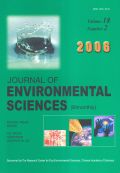Authors: XU, Fu-liu | LAM, K.C. | Dawson, R.W. | TAO, Shu | CHEN, Y.D.
Article Type:
Research Article
Abstract:
The long-term temporal and spatial dynamics of marine coastal water quality in Tolo Harbor, Hong Kong were explored. The Harbor is divided into three zones represented as Harbor, Buffer, and Channel Subzones. The time range for the study covers the period from the 1970s to the 1990s. The selected indicators for the comprehensive assessment of water quality consist of physical, chemical and biological aspects, including suspended solids (SS), Secchi disk depth (SD), 5-day biochemical oxygen demand
…(BOD_5 ), total nitrogen (TN), total phosphorus (TP), faecal coliform, chlorophyll-a (Chl-a), and the number of red tide occurrences. The results indicated the presence of obvious temporal and spatial trends with regard to changes in water quality. Spatially, water quality in the Channel Subzone is the best, while that in the Harbor Subzone is the worst. On a temporal basis, the average trend from bad to good was 1980s > 1990s > 1970s as indicated by most of the selected water quality indicators. Water quality during the late 1980s reached its worst level with the lowest SD, the highest BOD_5 , TN, TP, Chl-a concentrations, and the number of red tide occurrences. These long-term temporal-spatial water quality trends were also found in other studies of the Tolo Harbor. The large quantity of pollutants produced as a result of increasing population, industrial and commercial actives, and urbanization and industrialization trends in both Shatin and Tai Po seem to be primarily responsible for the changes in marine coastal water quality.
Show more
Keywords: temporal-spatial dynamics, water quality, indicators, pollution load, Tolo Harbor
Citation: Journal of Environmental Sciences,
vol. 16, no. 1, pp. 161-166, 2004
Price: EUR 27.50





